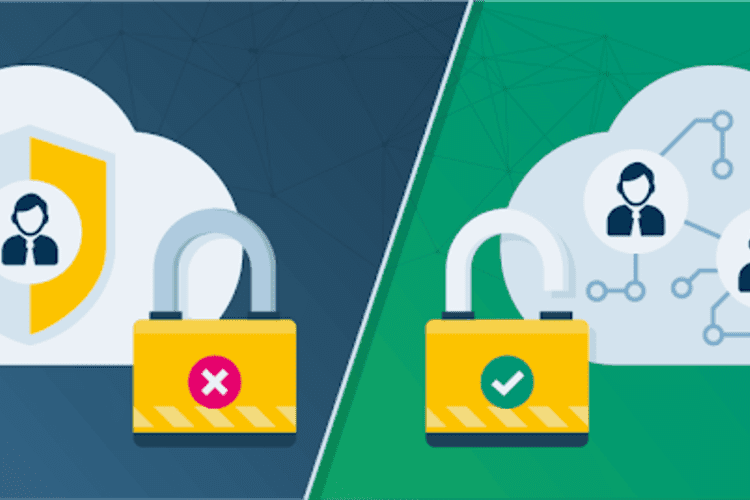Public and Private Blockchain: How They Differ and Work

Blockchain technology simplifies documentation, auditing, and other internal processes. Thanks to their improvements cryptocurrencies can now be used not only by banks and institutions but also users who want to pay for their subscription or make deposits to services like 22Bet. That's why it can be used in banks and other institutions. Usually, companies develop a separate private blockchain. But you can do without developers and use a public blockchain for your purposes. Here's what it consists of and how it differs from a private one.
Private and Public Blockchain: Similarities and Differences
Both types of blockchain operate with a P2P architecture. This means that users transfer data to each other without intermediaries. But a public blockchain has fewer restrictions than a private one.
If a company uses a private blockchain for work, only employees have access to it. And each of them can make transactions there. But only those with special access, such as system administrators and executives, can see the history of transactions or create additional blocks.
Public blockchains are controlled by the user community. So any participant can see the history of transactions, create blocks and transactions. And all transactions are protected by consensus algorithms, such as Proof-of-Stake and Proof-of-Work.
Features of Public Blockchains
The main advantage of a public blockchain is that almost anyone can register there. It is hard to hack into such a system, as all data is decentralized to multiple users' computers.
Public blockchains also have a network effect. For example, a developer creates a wallet. He can add functionality to it to interact with other apps on the same blockchain. Thanks to the functionality, some users of other projects will also start using this wallet. In this way, the new app can gain an audience faster.
Besides, developers cannot rewrite the code themselves or change an app created on a public blockchain without considering the opinion of the community. Rules prohibit this. For example, if developers want to change the code, they have to present them to the community and ask them to vote on the changes. And the code will only be updated after a majority of participants support it.
Usually, a public blockchain has an internal currency and a system of smart contracts. This is useful in transactions between two people. For example, a person sells an item. He sends a document to the smart contract with the rights of ownership of the product. And the buyer sends the cryptocurrency there. When the smart contract receives both the documents for the goods and the payment, it will automatically make the exchange. The transaction is transparent and without third-party involvement.
Once a transaction is confirmed in the public blockchain, it cannot be undone. For example, if a fraudster wants to send money for an item and then cancel the transaction, he won't be able to do so.
Anyone can use public blockchains. You don't need to have a contract with any of the participants or wait for a special invitation. For example, to use Ethereum, you must register a cryptocurrency wallet, buy ETH coins, and transfer them there. Later, you can choose what to do with them: exchange them, keep them or use them in DeFi apps to earn extra income.
Examples of Public Blockchains
Public blockchains include the most popular ones, like Bitcoin and Ethereum. The former is used only as a means of payment and as an investment vehicle. The latter can be used to create and run smart contracts and decentralized applications. The only disadvantage of Ethereum is that its transactions are expensive.
Ethereum services for a lower price and with global smart contracts are provided by the Erachain blockchain. Other platforms are also based on it. For example, the Foil Network blockchain is based on its technology, just as Binance Smart Chain is based on Ethereum. According to its creators, Erachain was created for the real economy and to record legally significant actions that will be recognized in courts. Such a blockchain can be used, for example, to record promissory notes, voting and securities issues.
Erachain supports global smart contracts. They work for all blockchain participants at once and are triggered when the conditions laid down in the blockchain are met. For example, this is how global smart contracts for lotteries work. If a user has a certain amount of coins in his wallet, he automatically becomes a participant. The person doesn't have to interact with the smart contract address directly. He simply fulfills the conditions for participation.
Because global smart contracts affect all blockchain users, they are released only after a vote. If a majority of participants support the idea, the project will launch. And so that it doesn't affect those users who don't want to use a smart contract, complex conditions are written into it. They cannot be fulfilled accidentally. For example, a person must have certain coins in his account on certain dates and in a certain amount.
Summary
Blockchains can be private or public. In a private blockchain, only some users can create blocks, while in a public blockchain, it is available to everyone.
A public blockchain has features:
- There is an internal currency.
- It costs a minimum of money to maintain.
- Anyone can join.
Examples of public blockchains: Bitcoin, Ethereum, Binance Smart Chain, Erachain. The latter uses global smart contracts that work for all participants in the network and are triggered automatically when certain conditions are met.